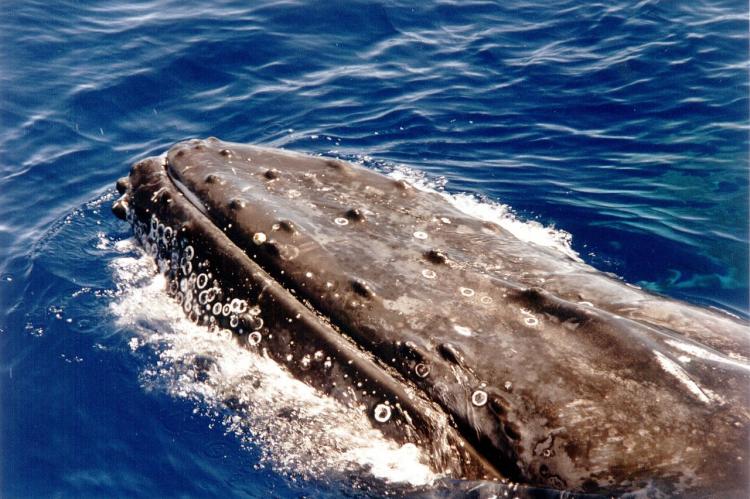Killer Whales Are Bullies; Humpbacks Are Bouncers
Humpback whales seemingly protect other species from orca attacks.
By the time Alisa Schulman-Janiger arrived on the scene off Monterey Bay, California, a pod of roughly 10 killer whales was working to isolate a lone gray whale calf from its mother. Blocking their advance, no less than 16 humpback whales worked in shifts to defend the calf and its mother.
Within 45 minutes, the calf was dead and the mother left shortly afterwards. However, the battle didn’t stop there. For at least another seven hours, the humpbacks chased the orcas, thrashed them with their fins and tails and prevented them from feeding on the dead gray whale.
“It was a really crazy scene to watch,” says Schulman-Janiger, a researcher with the nonprofit California Killer Whale Project. The humpbacks didn’t seem to be defending themselves, or even of one of their own. They even appeared to forsake food, sometimes for hours at a time, to thwart the orcas’ efforts to feed on the gray whale.
It was a really crazy scene to watch
Alisa Schulman-Janiger
In a new study, Schulman-Janiger and her colleagues have assembled numerous accounts of humpback whales defending other species, including whales, seals, sea lions and even fish from killer whale attacks. “We think that what’s going on for them is they just hear killer whales attacking, and they go in and break it up,” said report co-author Robert Pitman, who works for the US National Marine Fisheries Service.
Pitman first observed this unusual behavior along the Antarctic Peninsula south of Argentina and Chile when humpbacks cut into the middle of an orca attack on a Weddell seal. During the incident, a humpback flipped around and lifted the seal onto its chest in an effort to protect it from the orcas.
Captured by a BBC film crew on location with the researchers, the footage reveals the humpback’s protective maneuver was not accidental. At one point, the humpback nudged the seal back into safety when it was about to slide off. “These [humpbacks] are definitely interested in preventing these killer whales from harming these other animals,” Pitman said. Afterwards, Pitman started gathering other similar accounts. Out of 72 encounters between humpbacks and orcas attacking mammals, 61 involved orcas preying on species other than humpbacks.
Unknown motivation
What exactly is motivating humpbacks to intervene is difficult to establish. It could be territorial, but Pitman states that even if the whales are not deliberately defending other species, it still amounts to “inadvertent altruism.”
According to Schulman-Janiger, there is the possibility that some humpbacks may be reacting to previous trauma. Two of the 16 whales identified as exhibiting interventionist behavior bore the marks of previous killer whale attacks on their fins. The scars could have been inflicted being when they were calves themselves, or from injuries sustained while protecting their offspring. Schulman-Janiger even claims to witness emotion on display. The humpback whales “are definitely bothered by what’s going on.”
Pitman says this behavior could be a remnant of the interspecies conflict that occurred with greater frequency before industrial whaling decimated both populations. “As whales continue to recover, I think we should expect more surprising things like this,” he says.


